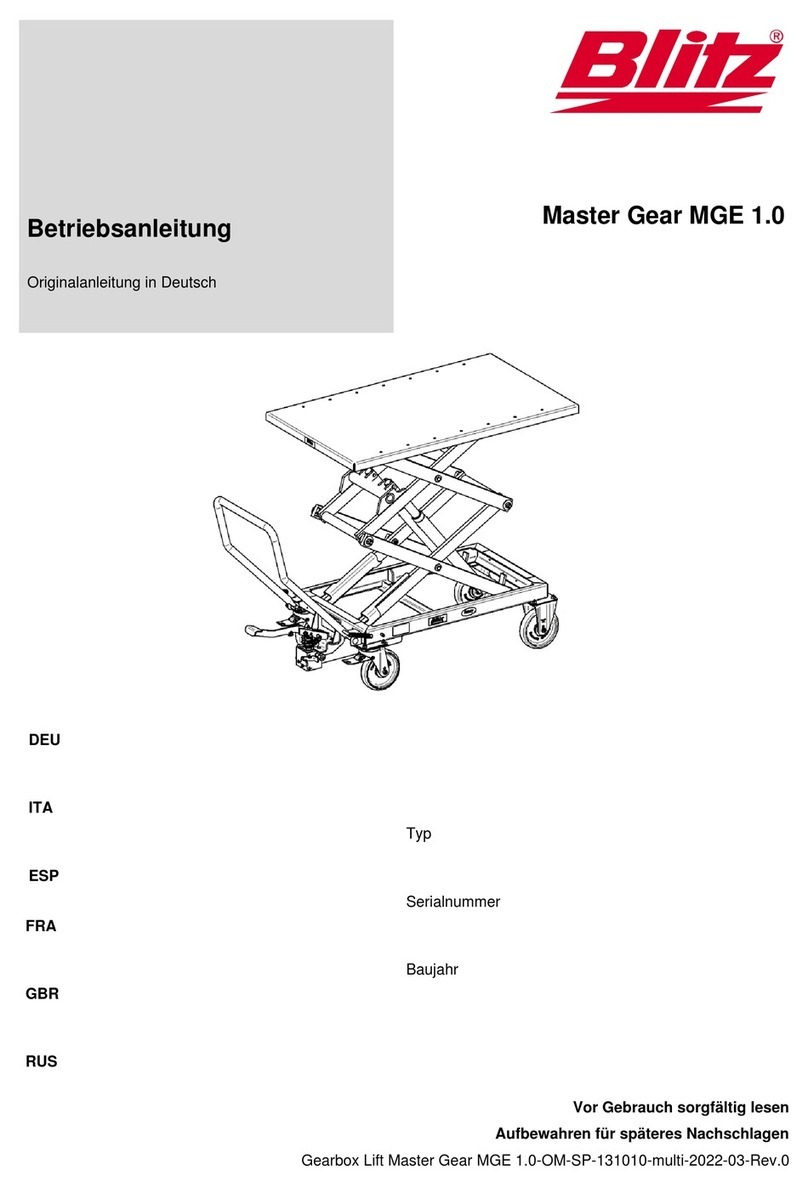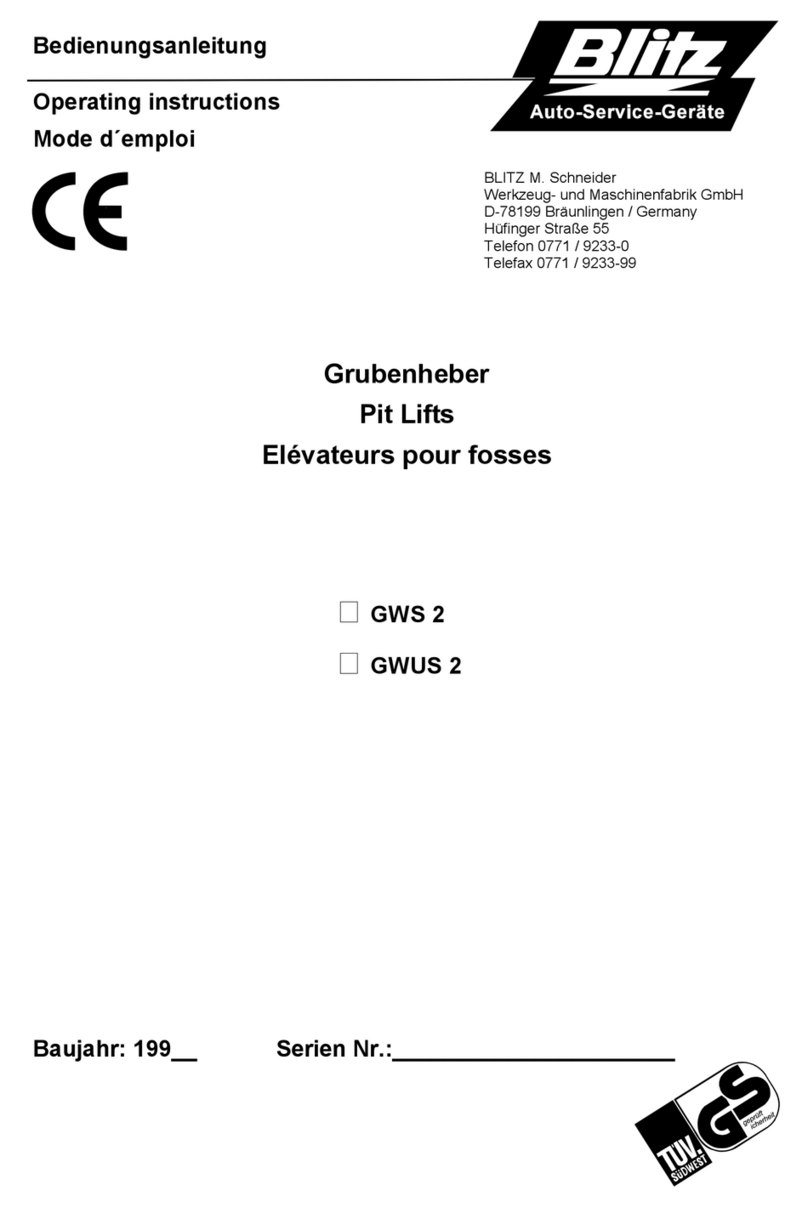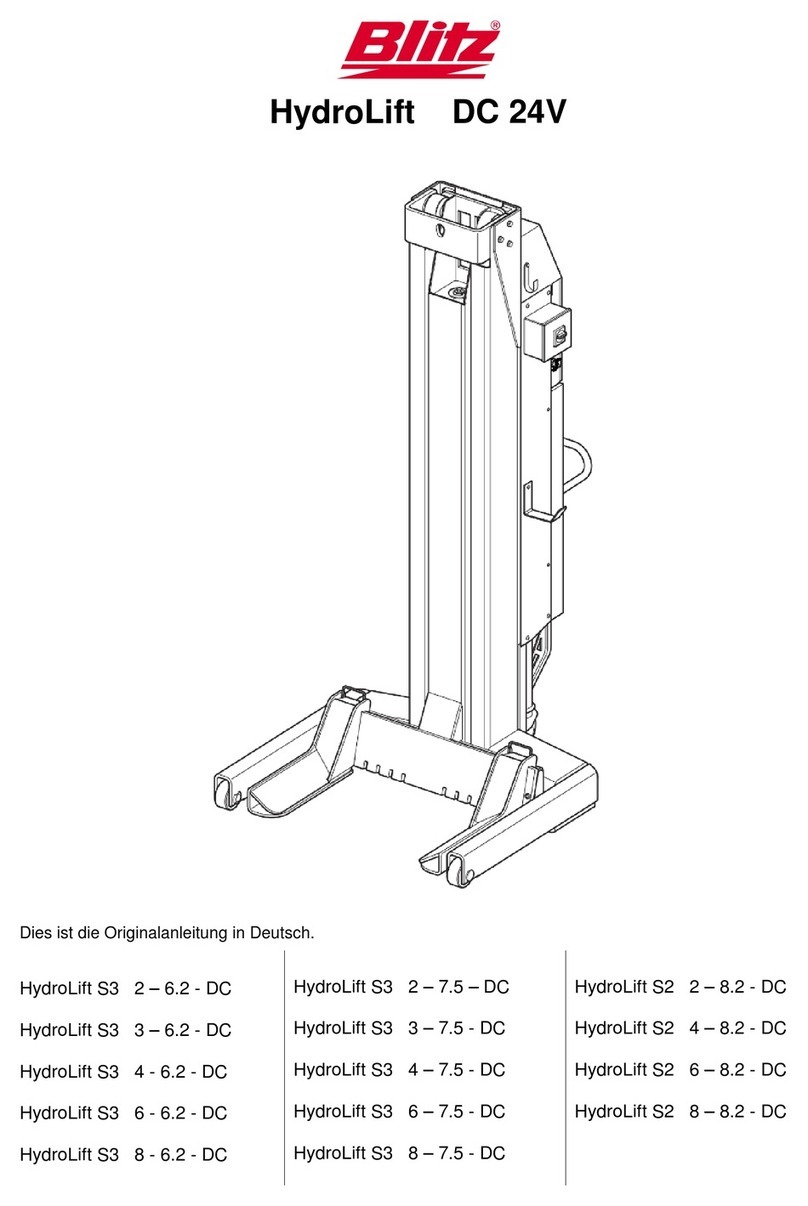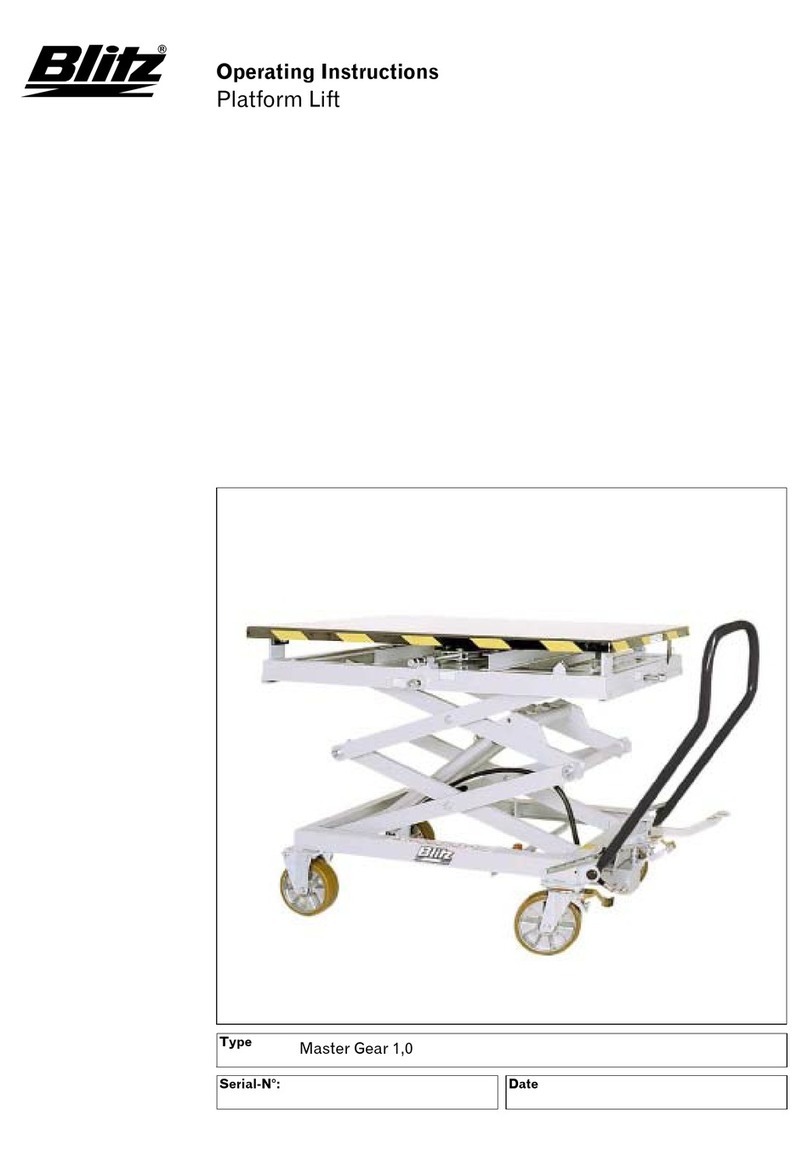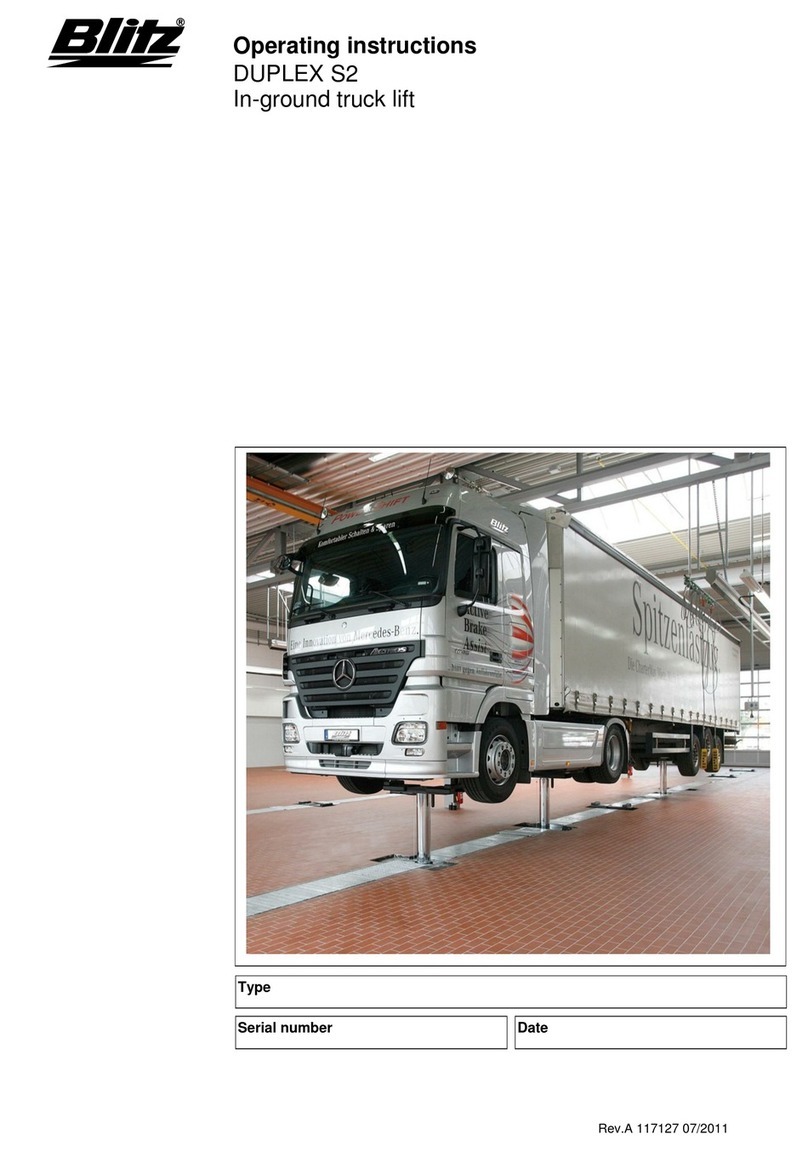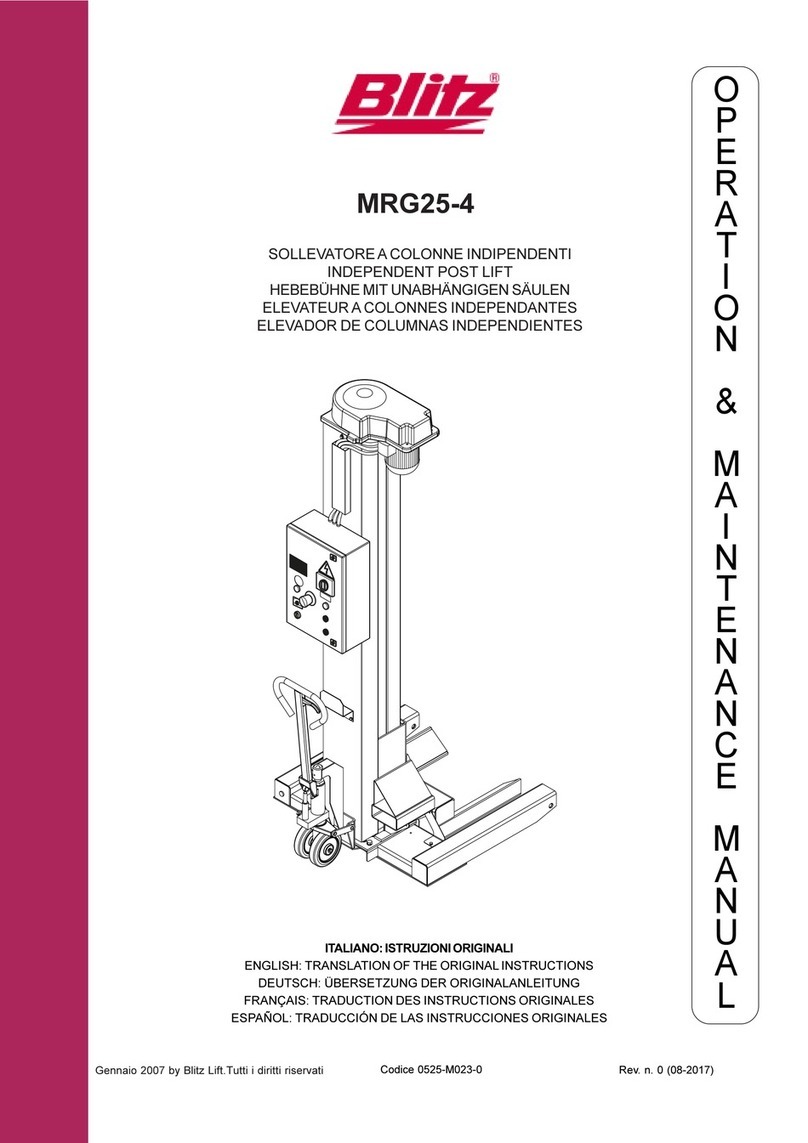
Instruction Manual for Mobile Jacks
6
Contents
1Introduction & Basic Safety Instructions ........................................................................... 7
1.1 Intended Use ................................................................................................................................................ 7
1.2 Basic Instructions........................................................................................................................................ 7
1.3 Safety-relevant components ...................................................................................................................... 7
1.4 Explanation of Notes ................................................................................................................................... 7
2Storage......................................................................................................................................... 7
3Transport, Installation, and Assembly ................................................................................ 8
3.1 Prepare Lifting Cylinder for Operation ..................................................................................................... 8
3.2 Install and Assemble the Lift ..................................................................................................................... 8
3.3 Compressed Air Supply............................................................................................................................ 10
3.4 Electrical Connection................................................................................................................................ 11
4Commissioning........................................................................................................................ 11
5Operation................................................................................................................................... 11
5.1 Load-carrying Devices .............................................................................................................................. 11
5.2 Supporting Bridges and A-frames .......................................................................................................... 12
5.3 Advice on hazards ..................................................................................................................................... 13
5.4 Lifting, Lowering, and Transporting Loads ............................................................................................ 14
6Maintenance and Repair ....................................................................................................... 15
6.1 Maintenance intervals .............................................................................................................................. 15
6.2 Perform a function test............................................................................................................................. 15
6.3 Check the compressed air supply. .......................................................................................................... 15
6.4 Check the hydraulic fluid level. ............................................................................................................... 16
6.5 Perform a safety check. ............................................................................................................................ 16
6.6 Changing the hydraulic fluid ................................................................................................................... 16
6.7 Replacing the hydraulic hoses ................................................................................................................ 17
6.8 Bleed the lift ............................................................................................................................................... 17
6.9 Clean or Replace the Pneumatic Control Valve.................................................................................... 17
6.10 Replace the Hydraulic Block ................................................................................................................... 18
7Troubleshooting ...................................................................................................................... 19
8Shutting Down and Disposal ............................................................................................... 19












